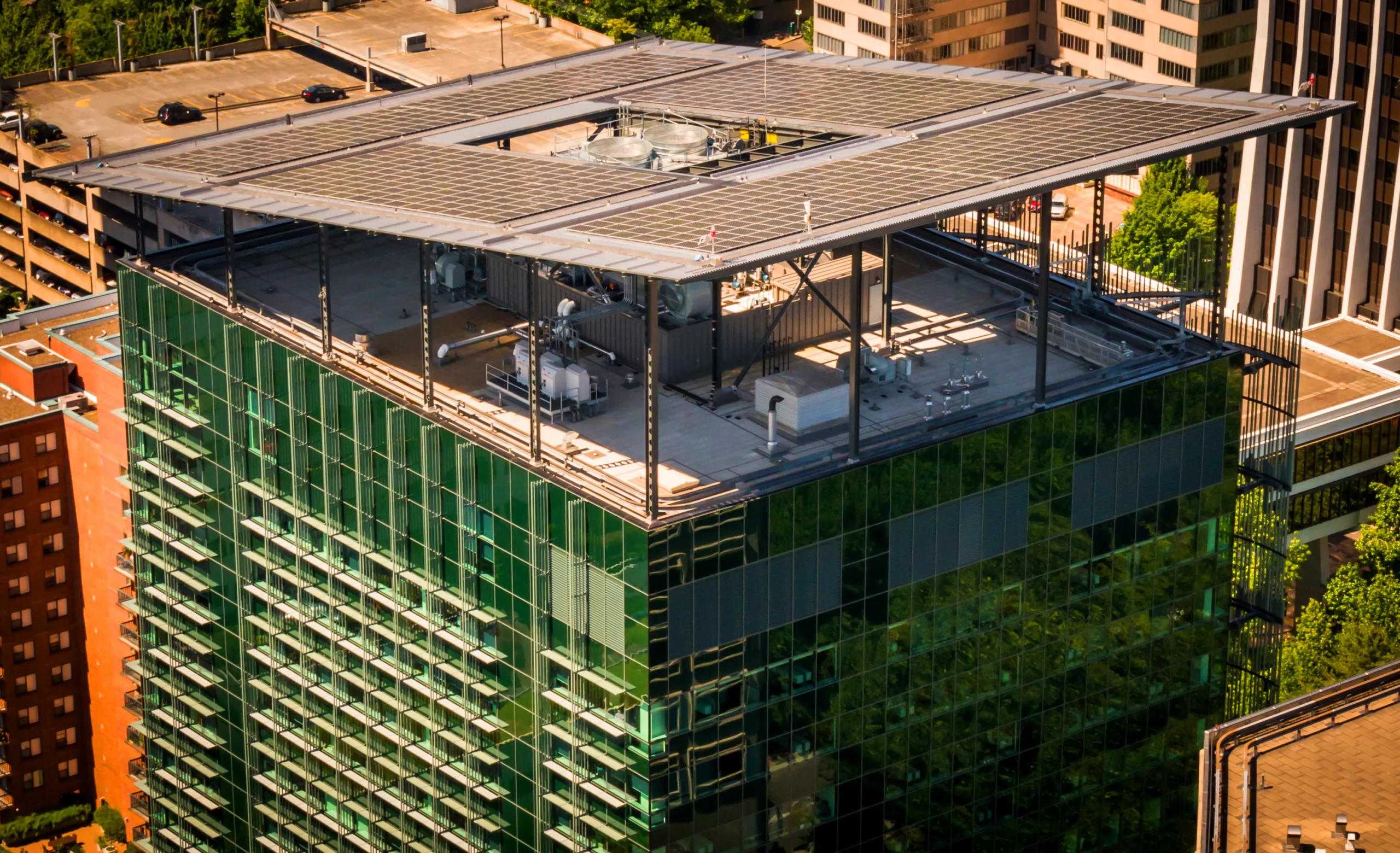
Evaporation and Blowdown
Evaporative cooling towers use water that is recirculated through a loop, and a portion of that water leaves the process in two main ways: evaporation and blowdown.
Evaporation: the portion of the water transformed into vapor to reject heat.
Blowdown: the amount of water that is drained from the system to manage mineral concentration and water quality.
Generally, water usage rises as the heat rejection demand or load increases, driving more evaporation and consequently, more blowdown. Ambient air temperature and humidity also affect the amount of water that is evaporated. Weather factors are hard to control and impact any system used in a given location.
Ways to Limit Evaporation
According to the EPA’s Water Efficiency Management Guide, “approximately 1.8 gallons of water are evaporated for every ton-hour of cooling.” But this can change drastically when using specific tower designs and/or plume abatement technology.
Tower Design
Selecting a water-saving cooling tower during the design process can be one way to help conserve water. Many manufacturers offer closed-circuit cooling towers, also known as fluid coolers, which are designed to cool a water/glycol solution in a closed coil. Many fluid coolers allow for seasonal dry operation in some climates. The higher switch point temperatures offered by the Marley DT Fluid Cooler allow for longer periods of dry operation, reducing site water usage, minimizing water treatment costs and simplifying operation in freezing conditions. Fluid coolers can reduce water treatment costs and water volume in the blowdown process.
Other “hybrid” designs, such as the Marley NCWD Cooling Tower, function like a wet cooling tower with an additional dry section installed parallel to the traditional heat transfer media. This allows operation in either evaporative-only or combined-wet/dry mode, to limit water evaporation and plume.
Plume Abatement Technology for Field-Erected Cooling Towers
Reducing plume – the visible vapor “cloud” that leaves the cooling tower – can be an important design factor for a variety of reasons, including aesthetics (high rises), and safety and low visibility (airports, railroad crossings). Reducing plume also helps reduce water consumption and its related costs. Plume abatement systems, like the patented Marley ClearSky® System, use a series of PVC heat exchanger modules in the tower plenum to condense water vapor before it exits the tower. When operated in plume-abatement mode, the ClearSky System reduces water usage by up to 20% or more.
Ways to Reduce Blowdown
As pure water evaporates from a tower, it leaves behind dissolved solids (calcium, magnesium, silica, etc.) that are present in the recirculating water. Eventually, mineral concentration buildup in the water is reduced through a process referred to as “blowdown,” or “bleed.” Blowdown directs water with high mineral concentration to the drain and is replaced with fresh water, called “makeup” water. This continuous process helps protect tower components from mineral deposits and preserves tower performance. The best way to limit blowdown requirements is by pre-conditioning the makeup water. This requires a water treatment system such as a “water usage optimizer.”
Water Treatment Systems
Cooling tower water treatment can help increase the system’s safe cycles of concentration (COC), or the number of times the concentration of total dissolved solids (TDS) in cooling tower water is multiplied relative to the TDS in the makeup water. Treating the water via chemicals and filtration can limit the TDS circulating in the tower and reduce blowdown frequency and water use.
A water management program and regular maintenance are essential to cooling tower operation. A knowledgeable water treatment professional will apply various chemical treatments to adjust water chemistry and employ filtration systems to remove ions, salts and particulates from source water.
Water Usage Optimizer System
A water usage optimizer, like the Marley WaterGard™ Filtration System is a newer technology that preconditions the makeup water. It physically blocks minerals commonly found in municipal water streams (chlorides, calcium carbonate, silica, etc.), reducing mineral content in makeup water and enabling higher operating COC. The Marley WaterGard water usage optimizer can reduce water usage by up to 59%, and reduce wastewater up to 88% under some conditions.
Water Usage in Evaporative Cooling
A recently published study indicates that water-cooled solutions may use less total water than air-cooled options when both the water onsite and the water used upstream at the power generation plant are considered. Employing water conservation methods like those cited above can help reduce cooling tower water usage.
The bottom line is that water conservation methods can be effectively employed with evaporative cooling solutions, including both new and existing cooling towers. A good first step to consult with a technical representative.

